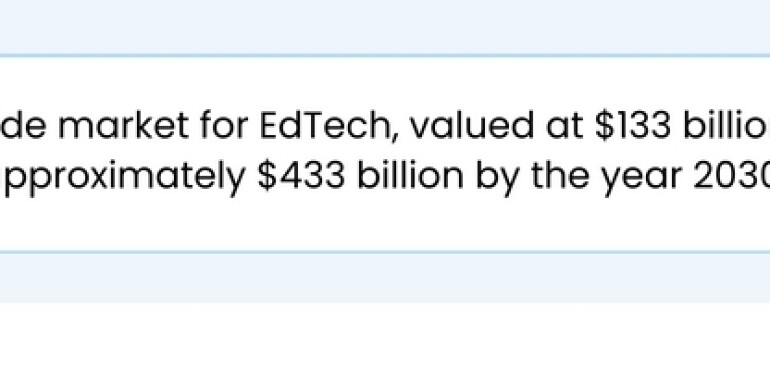As we step into 2024, the landscape of higher education is undergoing a significant transformation, driven by a surge in technological advancements. The phrase "trends in higher education" now resonates with an exciting array of innovations, fundamentally reshaping how knowledge is imparted and received. This evolution is not just a fleeting change but a robust movement towards a more interactive and technology-integrated educational experience.
In recent years, there has been a pronounced shift towards incorporating digital technology in educational settings, a trend that continues to gain momentum. From virtual classrooms to AI-powered learning tools, the realm of higher education is evolving rapidly to accommodate new technologies. This progress signifies a crucial pivot point in how educational institutions prepare students for an increasingly digital world. The integration of technology trends in education is not just about staying current with the times; it's about enhancing the learning experience and opening doors to new possibilities for students and educators alike.
In this landscape, where change is the only constant, educators, students, and institutions are witnessing an unprecedented era of growth and innovation. As we delve deeper into the nuances of these trends, it becomes clear that they are not mere additions to the educational toolbox but are becoming integral to the fabric of modern higher education.
The Rise of Educational Technology Trends in 2024
The year 2024 marks a pivotal moment in the realm of higher education, witnessing a significant upswing in the adoption and integration of technology. This surge is not just a trend but a comprehensive movement, reshaping the core dynamics of how education is delivered and experienced. The impact of these educational technology trends is profound, signaling a shift towards a more inclusive, adaptive, and innovative educational landscape.
Key Factors Driving Higher Ed Trends
Several key factors are propelling these trends forward.
- Firstly, the increasing demand for remote and flexible learning options has been a significant catalyst. The recent global events have accelerated this shift, making technology an indispensable part of education.
- Secondly, the advancements in artificial intelligence and machine learning are enabling more personalized and adaptive learning experiences. This personalized approach helps cater to individual learning styles and paces, a stark contrast to the one-size-fits-all model of traditional education.
- The third driver is the growing recognition of the importance of technology literacy in today’s job market. Educational institutions are responding by integrating more technology-focused curricula, preparing students for the digitalized workforce.
Overview of New Technology in Education
In terms of new technology in education, several innovations are making waves.
These technological integrations are not mere enhancements; they are revolutionizing the very essence of higher education. As we move further into 2024, these trends signify a forward-thinking approach, embracing technology as a fundamental element in educating future generations.
Major Trends in Higher Education for 2024
As we navigate through 2024, higher education is experiencing a transformative phase, characterized by a series of significant trends. These developments are not just reshaping the educational landscape but are also setting the tone for future learning methodologies. Two of the most prominent trends in this evolution are interactive learning environments and the integration of AI and Machine Learning in curriculum development.
Interactive Learning Environments
Interactive learning environments have emerged as a cornerstone in the new era of higher education trends. These environments leverage technology to create a more engaging and participatory learning experience. Key aspects include:
- Gamification: The application of game-design elements in non-game contexts, like education, to motivate and enhance student engagement and learning. For example, language learning apps are using game mechanics to make learning new languages more fun and interactive.
- Interactive Online Platforms: Platforms like Massive Open Online Courses (MOOCs) provide interactive courses with live sessions, forums, and peer-to-peer interactions, thereby offering a classroom-like experience in a digital format.
In addition, for those interested in homeschooling, we have created a valuable homeschooling resources collection, which provides useful information and a variety of resources. This article is an ideal starting point for students looking for effective materials and techniques for homeschooling.
AI and Machine Learning in Curriculum Development
Another significant trend is the incorporation of AI and Machine Learning in curriculum development, which is part of the broader ed tech trends. This includes:
- Personalized Learning Paths: AI algorithms analyze student performance and learning patterns to tailor the curriculum according to individual needs, ensuring a more effective learning process.
- Automated Administrative Tasks: AI is being used to automate grading and feedback, allowing educators to focus more on teaching and less on administrative tasks.
- Predictive Analytics: By analyzing data, AI can predict student outcomes and provide early interventions to improve academic success.
The integration of these technologies in higher education is not just a temporary phase but a long-term shift towards a more dynamic, personalized, and efficient learning environment. As we continue through 2024 and beyond, these trends are expected to grow and further integrate into the fabric of higher education.







